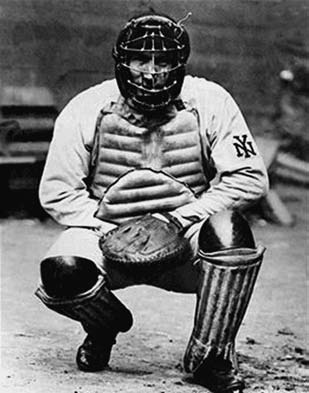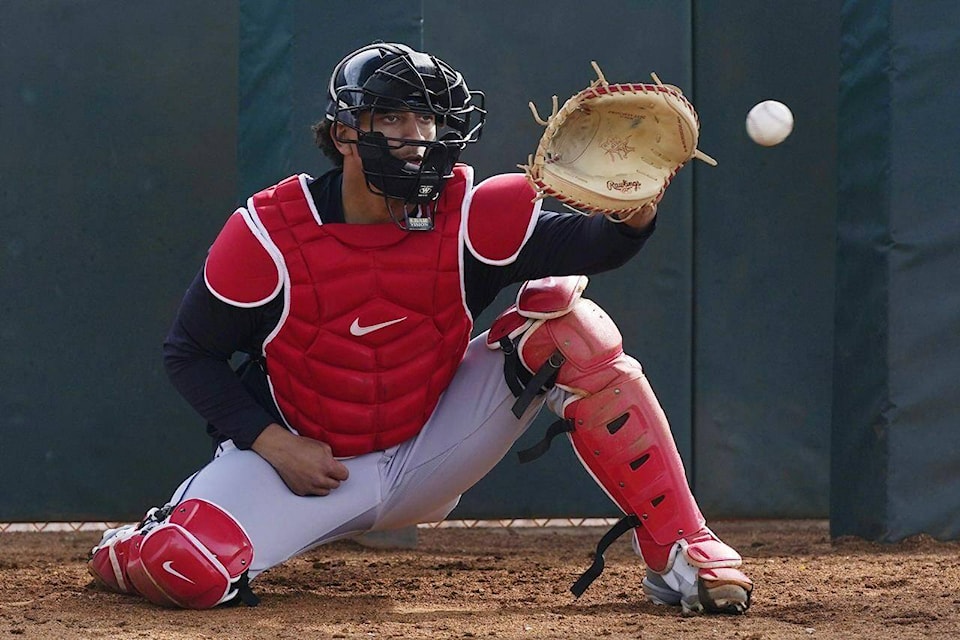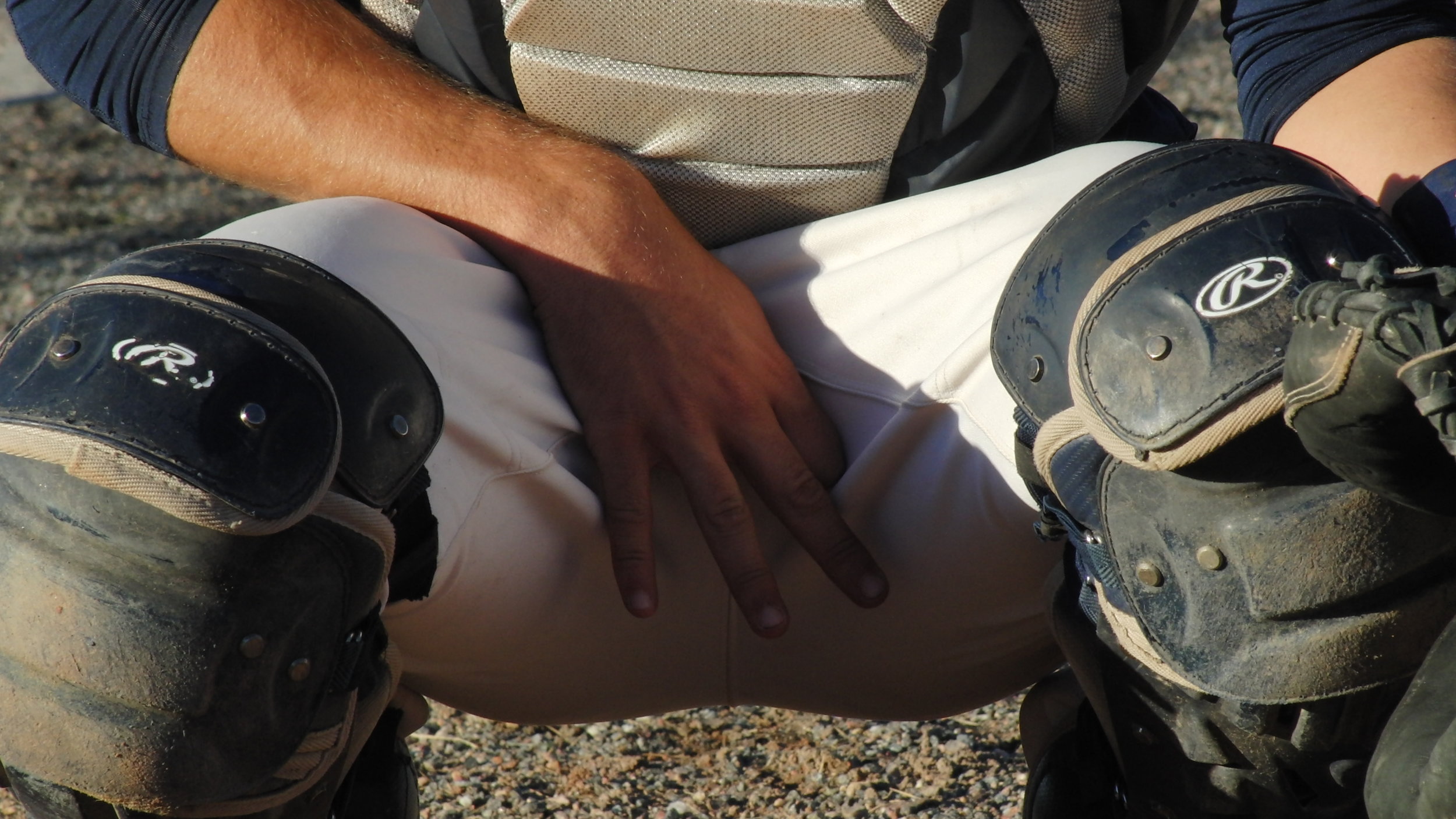Catcher?
When watching a baseball game, many people’s attention is naturally directed towards the player on the mound, in the center of the infield, who throws the ball towards the batter and controls the pace of the game. Second to the pitcher, many would acknowledge the shortstop, the third baseman, or even the center fielder as some of the most difficult positions, played by the most capable athletes. However, many people fail to appreciate the man behind the scenes, covered in protective, bulky gear, crammed in between the umpire and the batter and home plate. The catcher.
Many people view the catcher as the guy who simply sits in the same place the whole game and does nothing but squat and receive balls from the pitcher. What most fail to recognize, especially those who have not played baseball or softball themselves, is that the catcher is the leader of the defense.
A catcher’s job is to instruct each player on where to be at any given moment in any possible situation. Catchers direct the infielders on where to line up to ensure the outfielders make a throw on target. They communicate with players in foul territory to assist them with spacial awareness and their general position in relation to the fence bordering the field. They call plays in specific situations depending on various factors, such as the baserunner speed, the score of the game, the type of hitter up to bat, and the time at which this situation occurs in the game.
Much of this complexity is nearly impossible to notice when watching baseball on television, and much of this is overlooked among all baseball fans because their focus is directed towards the more glorified positions, such as pitcher, short stop, or center field.
In this article, I will cover the history and development of the catching position, the relationship between the catcher and the pitcher, and many other aspects of this complex position within a complex sport.

The History of Catching and Catching Equipment
The catching position has developed extensively since the beginning of baseball, and the protection and high tech, pricy, lightweight gear that is seen worn by catchers today is far from what characterized the position long ago. For example: catching in the late 1800’s can be summed up by the following quote:
“We used no mattress on our hands,
No cage upon our face;
We stood right up and caught the ball,
With courage and with grace.”
— Harry Ellard, “The Reds of Sixty-Nine” (1880s)
Eventually, after many gruesome injuries and overt safety hazards, protective gear for catchers became more common. Improvements in this protection continued until the first fully geared catcher took the field at Polo Grounds in 1907. Catcher Roger Bresnahan was the first catcher to utilize shin guards, completing the outfit of padded gear that somewhat resembles what is seen in today’s game.

This general template for gear was repeatedly tweaked and gradually improved as the game of baseball developed. Now, all catchers have access to shock-resistant, highly researched, and practical gear that allows for limited-hindrance of mobility and assurance of protection and safety behind the plate.
What do Catchers do?
Many see the catcher as the lazy player who lacks the skill and athletic ability to play a position in the field, such as the infield or outfield. The depth and complexity of the catching position is predominantly behind the scenes, and it is not apparent to the average viewer of a game. Along with leading the defense, the main aspects of catching include receiving and framing, blocking, pitch calling, throwing runners out, and adequately pacing the game.
Receiving and Framing
Receiving is the catcher’s ability to catch the baseball from the pitcher with control and rhythm. Good receiving coincides with the catcher’s ability to frame pitches. This is the process of slightly changing the location in which the pitch was caught, moving it closer to the strike zone to make less accurate pitches appear to be strikes to the umpire.
Receiving and framing are crucial aspects of the position that help distinguish elite catchers among others. The nuance of the receiving game is a great representation of the position’s general complexity. Depending on if the pitch is thrown inside, outside, or low or high, the catcher has to adapt the mechanics of his reception of the ball to make each pitch look slightly more accurate, hoping to get the strike call from the umpire.
A catcher’s ability to skillfully frame and receive pitches can completely change the trajectory of the game, earning far more strikes for the pitcher, and therefore helping the team’s chance at success.

Blocking
Blocking is objectively the hardest aspect of catching, and the skill for which many catchers are regarded for. Blocking refers to the catcher stopping wild and inaccurate throws from the pitcher, keeping the ball in front of the catcher and preventing baserunners from advancing on pass balls or spiked pitches.
This is another highly intricate skill, as the catcher has to subconsciously react to the pitch’s location in the dirt and change their blocking form accordingly. For example, if a pitch is thrown in the dirt down the middle, it is far more straightforward to block than if the pitch is thrown to the left of the right, in which case the catcher must angle their body in the direction of home plate to make the ball bounces in a practical location to pick up and make a throw if necessary.
This is further complicated when the pitcher has an arsenal of different pitches, which vary in spin rate, spin direction, speed, release angle, and movement. These factors all contribute to the blocking form of the catcher as well. Balls spinning forward, such as curveballs or sliders, will bounce in the opposite direction that they are going when they make contact with the dirt. Therefore the catcher must position their body off center from where the pitch hits the ground, entrusting in the physics of the ball’s spin will carry it towards the catcher’s chest protector.
The science behind blocking has been constantly researched and refined, leading to changes in catcher’s stances and the form of the blocking movement itself.
Pitch Calling
Shifting towards the analytical and statistical aspect of the position, pitch calling is an important aspect of each game for a catcher. A pitcher can be able to throw a thousand different pitches with consistency, but without knowing how to effectively mix up these pitches and throw hitters off balance, that same pitcher could find little success.
It is typically a catcher’s job to analyze the hitter’s tendencies to call different pitches in specific situations. The ordering and location of these pitches is extremely important, and a good catcher can exploit the weaknesses of the batter to keep them guessing and outplay them in the mental game of baseball.
The catcher’s ability to effectively call pitches is what establishes their role as a leader on the field, as it requires detailed knowledge of the pitcher and his strengths.

Throw Downs
A throw down is when the baserunner tries to advance to the next base (steals a base) and the catcher receives the ball, transfers it quickly to their throwing hand, and throws the ball down to the base that the runner is attempting to snag.
This consists of many intricate movements to release the ball with the perfect balance of speed and accuracy. The transfer is the transition of the ball from the glove to the throwing hand, using the momentum of the pitch to carry the mit back towards the side of the catcher’s head, where it meets the hand. Then is the footwork and transfer of power in the lower half. This maximizes the power that can be generated for the throw while releasing the ball in a timely manner.
The amalgamation of these many intricate moving parts makes for the perfect throw down, enabling the catcher to earn outs for the defense and simplify the game for the pitcher.
Pacing the Game
The relationship between the pitcher and the catcher is referred to as the “battery”. When the chemistry between these two positions is on point and they share a natural compatibility, the game has a flow and cadence to it, helping the pitcher stay in a rhythm and maintain a strong mindset throughout a chaotic game.
However, this cadence is often disrupted, whether with a big hit from the offense or an error from the defense. There are so many different things that can interfere with the pitcher’s mindset, and they can lead the pitcher into a series of poor pitches and sloppy mechanics.
A good catcher will realize these disturbances from the pitcher and they can call time, and have a mound visit with the pitcher. This is a time to “clear the mechanism” and restore a rhythm to the game based on the pitcher’s timing. After an effective mound visit, it is often apparent that the pitcher is in a state of mental clarity, and they are able to perform better due to their restored control.
Recent Changes to the Position
Although catching has constantly been improving and changing, the position has experienced exponential development within the last decade. Most of these developments have been with respect to the stance of catchers, and how they can most effectively position themselves to comfortably receive pitches and still have a chance at throwing runners out who attempt to steal.
Traditionally, catching had a primary and secondary stance, in both of which the catcher was squatting on both legs. The primary stance was for when there weren’t runners on base, and the batter was early in the count. The secondary stance was a position of readiness, used when there were runners on base or when the batter had two strikes.
However, recent changes to the catcher’s stance have supported the utilization of the “one knee down” position. This is when the catcher puts one knee on the ground and props themself up on the other. This allows them to more comfortably get low without exhausting their legs, and it makes it easier for the catcher to get his glove close to the ground and receive lower pitches with better timing and precision.
This new stance has also changed the approach to blocking, as it can be done much more fluidly and it requires less effort and energy. This new stance has revolutionized the catching world and simplified the game of catching quite a bit, making the movements more concise, natural, and easily teachable.

The Future of Catching
Catchers will always be a requisite part of baseball, and they will forever play a fundamental role in the functioning of an effective defense. With this being said, many nuances of the catcher’s role in receiving and framing pitches could soon be pointless. The MLB has repeatedly teased the idea of AI umpires.
These computers would call balls and strikes with impeccable accuracy, despite the catcher’s efforts to frame pitches and do their job to make the pitcher look better. Many people have questioned the introduction of this new style of calling pitches, as it strips baseball of the art of catching, giving no value to the catcher’s previously-vital precision. Inspirit AI stated believes:
“In the future, one of the most pressing uses of artificial intelligence will be the creation of robot umpires in baseball, which seems to be about four to five years away. With new robot umpires, the games will be less reliant on humans and their errors, leading to players showing their true talents against other players with very few confounding variables remaining.”
— AI In Sports: Its Impact on Baseball
There is so much up in the air about baseball in the future, especially regarding the catcher’s role. Despite how much the game changes and how much technology affects the trajectory of Baseball, the catcher will remain a pivotal position on each and every team. The general-like character of a catcher and their unique ability to navigate and order a defense will never be replaced by some technological advancement or some robot.
